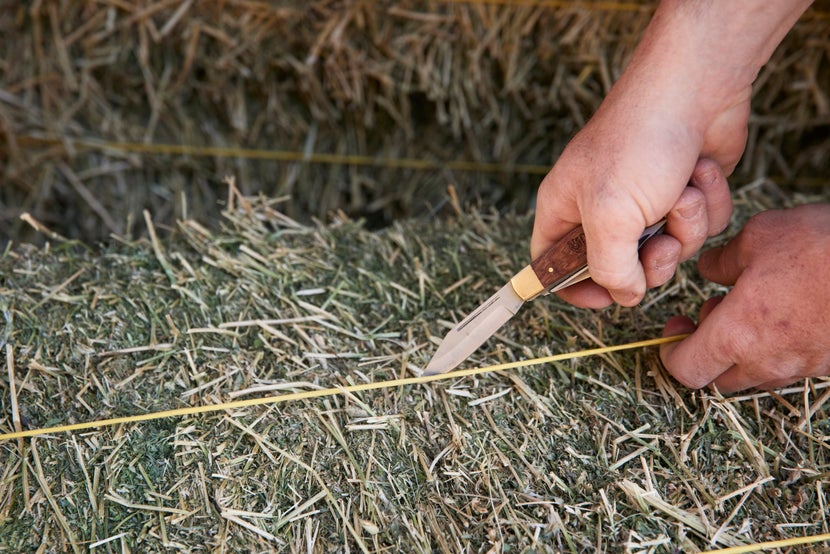Horse Feeder Guide:
Types, Feeding Methods, & Expert Tips
The Methods Behind the Horse Feeding Madness
Many different factors go into the feeding of your equine companions. What kind of feed will you be preparing? How will you be feeding? Why would you choose one feeding method over another? As each horse and situation is different, please use your discretion to determine what feed and feeder type would be best.
Before selecting a type of feeder, we encourage riders to understand nutritional needs for horses, think about which type of feed could be best for the health of their horse, and learn how much to feed. As always, we advise consulting with your own equine nutritionist or vet to determine what could be best for your horse. There's always something to learn about horse nutrition!
Already have your horse's diet dialed in? Read on to learn more about the types of horse feeders, as well as some of the advantages and disadvantages of each. We will also cover some expert tips and suggestions for horse feeding in different environments in this educational guide.
Types of Feeders
There are several types of horse feeders that differ in design, material, size, and more. It can be a bit overwhelming to navigate through the many options. Whether you are providing hay, grain, or water, we have listed a few common feeders below.
Hay Bags and Nets
Otherwise known as slow feeders, hay bags and nets are designed to decrease the rate at which your horse eats, promoting a more natural grazing experience. If your horse is currently fed on a schedule and you are considering switching them to slow feeding, we encourage you to read our article on Horse Slow Feeder Guide. Hay bags and nets can be fed on the ground protected by a bin, or strung up and secured. They should not be placed so high as to cause the horse to crane its neck. These feeders come in a variety of sizes and holes to accommodate different hay types and situations, whether at home or traveling. A horse could potentially get caught up in a hay bag or net depending on the hole size. So if your horse has shoes, make sure the feeder is properly secured to help thwart the possibility of entanglement.
Buckets and Pans
Buckets and pans are great for either temporary or long-term use when feeding pellets, cubes, grain, and supplements. Plastic buckets are a convenient and cheap option, but they can be prone to cracking if exposed to heavy exertion. A rubber bucket tends to be more durable, but we still recommend removing it from your horse's vicinity after they are done eating from it. This will help keep your rubber bucket from breaking down too quickly. Horses can be prone to tipping their buckets and pans over, wasting food (and money). If your horse is playful and does not nicely eat from a bucket, we highly suggest securing it one way or another. Check out our horse feed accessories for a few different options.
Hay Bins, Troughs, and Racks
Hay bins and hay/grain troughs are larger and typically free standing on the ground of a paddock or pasture. They are commonly made of heavy-duty plastic for durability. It is helpful for your bin or trough to have a drain hole so water doesn't pool up under the feed. Hay racks refer to metal feeders with slots; racks can be smaller and secured to a stall wall or on the fencing. There are also larger pasture racks, commonly featuring a bottom catch bin or top cover. These are ideal for feeding a group of horses and keeping hay better protected. Always keep in mind whether you are feeding round or square bales while considering hay bins, troughs, and racks. Depending on the design, your horse could become entangled. To help prevent a leg injury, look for feeders that have smooth bars and edges and large or small enough gaps.
Feeding Environment
The feed provided and the environment the horse is kept in will determine the type of feeder you need. Are you feeding individually or in a group? Do you have pushy and rowdy horses that get aggravated during feeding? Monitor your horse's behavior and do not be afraid to try different kinds of feeders or adjust the feeding situation as necessary. We advise using feeders designed specifically for horses to help ensure their safety.
Stall Boarding
Stabled and stalled horses are in a smaller space, and therefore more prone to injury from poorly designed or poorly secured feeders. Floor space is normally already limited, and having a feeder on the ground will take up more foot space. Shavings, bedding, and manure could potentially get mixed in and lead to health issues. We are not saying to avoid ground feeders altogether if your horse is in a stall, as a ground position is more natural for horses to eat from. However, most owners of stabled horses choose to opt for hay nets, buckets, or hay racks hung up off of the ground. If your horse's feeder is integrated into the stall itself, even better! Adding in a toy or toy feeder can also help entertain your horse in its stall, which can aid with stall vices like kicking or cribbing.
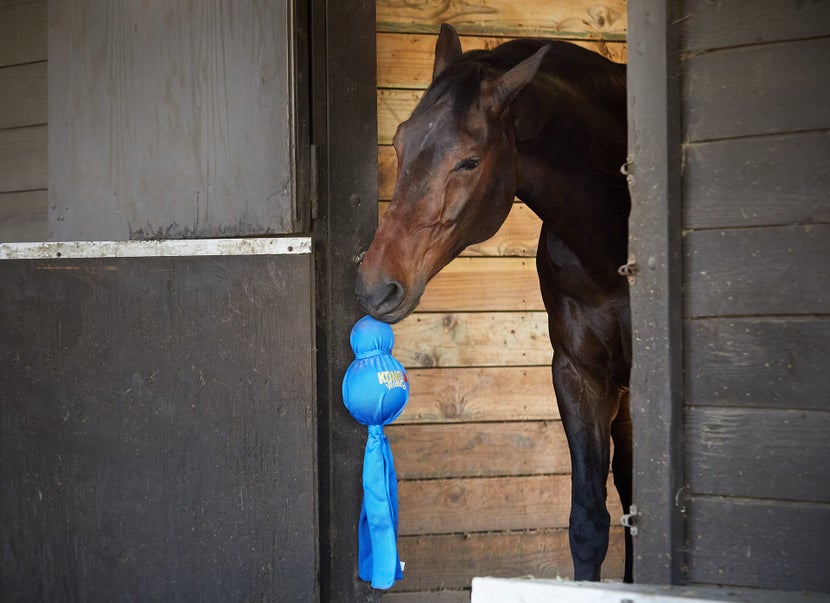
Pasture
Depending on the availability of nutrient-rich grass in pasture, horses might need additional supplementation and hay forage. If your horses are often left alone for long periods of time, providing feed in pasture with large-bale hay nets or racks gives your horses access to adequate forage to meet their daily intake, particularly in the wintertime. Large feeders are not as easy to move, but they are convenient for long-term use. A group of horses together in pasture need enough feeder space to discourage dominating behaviors. Place your feeders away from anything in the pasture that might cause injury, and also place them far enough apart to prevent issues between horses. If your horse has plenty of access to pasture grass and is eating too much, consider a grazing muzzle to slow them down.
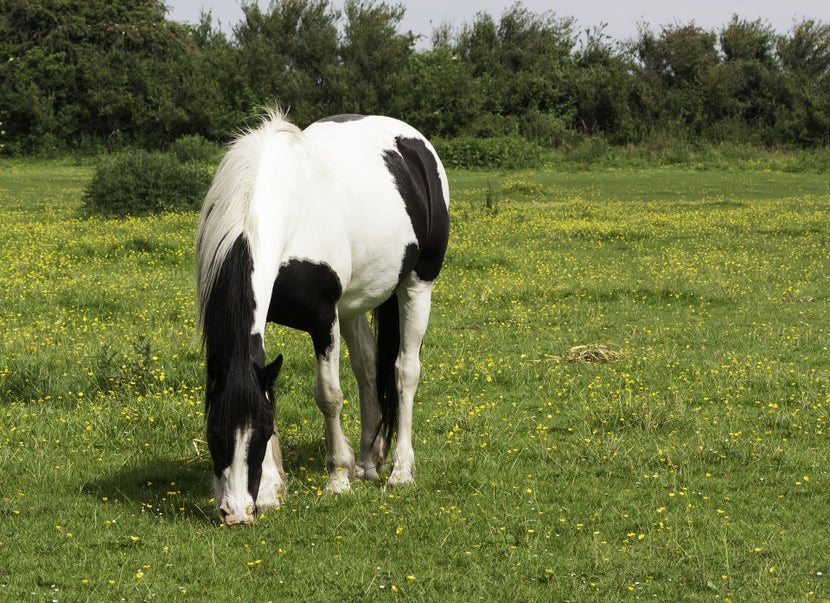
Mud, Rain, and Snow
At times, horses will eat dirt to meet their mineral needs, but too much ingested dirt from eating muddy hay can potentially cause your horse to colic. If your hay gets rained or snowed on and then sits in a damp area for a long period of time, it can become moldy and dangerous for your equine's health. Having elevated feeders with covers to keep feed away from mud, and dry from rain and snow, is beneficial as the weather turns sour. You can also place down protective elements, like gravel and a rubber mat, to minimize hay waste from your horse's ground feeder.
If your horse goes through the winter season outside, it will most likely follow the natural pattern of eating more calories to maintain its body temperature. You might have to tweak your feeding methods with the change of seasons to meet your horse's needs. Horses tend to not drink as much water in wet and cold conditions, but it is imperative for them to have water to properly digest food, particularly if they are consuming more feed than normal. You can help your horse's water intake by also offering warm water or foods soaked with warm water, such as pellets.
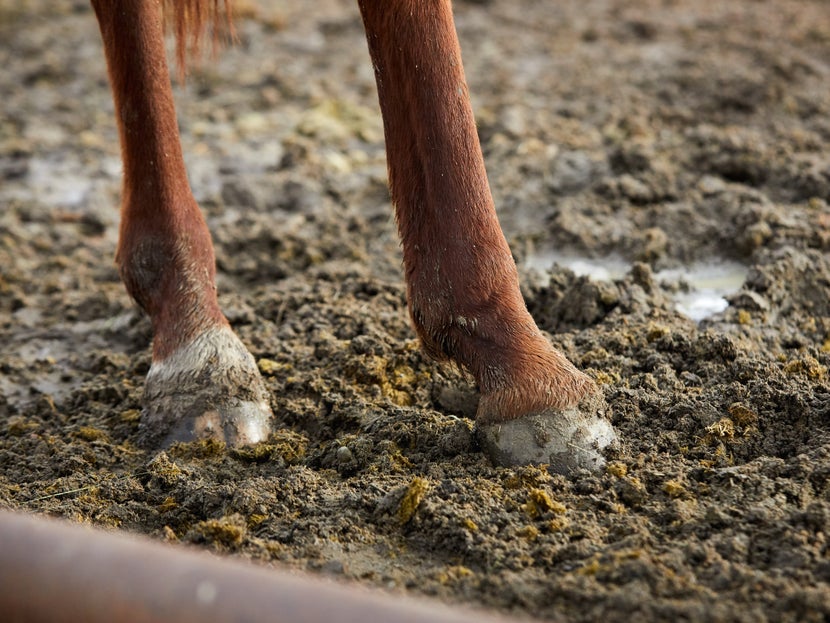
Tips and Tricks for Feeding
Hay sticking to you?
One of the worst things in the equine world is getting hay stuck all over you, and especially getting a hay splinter in your hands! There are clothing items on the market that help slick away dirt, hair, and hay. Less static cling means less hay on your body (and in your underwear or socks). In the wintertime especially, the air is drier and conducts more static electricity. Natural materials like cotton and leather are neutral in absorbing and dissipating electricity. Synthetic materials, such as nylon, can be less conductive because of their plastic makeup, but it helps to have moisturized skin and a blend of other materials to improve static resistance.
We recommend a lightweight jacket for feeding in warmer temps, and a waterproof jacket or softshell for feeding in the wintertime. A good base layer and lightweight vest or insulated vest are also great at keeping the hay off of you! Of course, we cannot forget about gloves to protect your hands while handling hay.
Leaving your horse in another's care?
Leaving our horses home or at the barn for one reason or another means their health is being entrusted to someone else. Hopefully a friend or barn-mate experienced with the care of horses is there to assist! If not, providing as much instruction and feeding guidance to your caretaker will give you more peace of mind.
Whether your horse gets their forage in metal feeders, hay nets, or buckets, it helps to prepare all of your horse's portions in advance to control the amount they are eating. If you do not have the time to do so, making the effort to have explicit instructions on hand will lessen the likelihood of questions or doubts from your caretaker. Should your horses be out in pasture, make sure they have sufficient feed and are getting checked on regularly!
Traveling and Camping
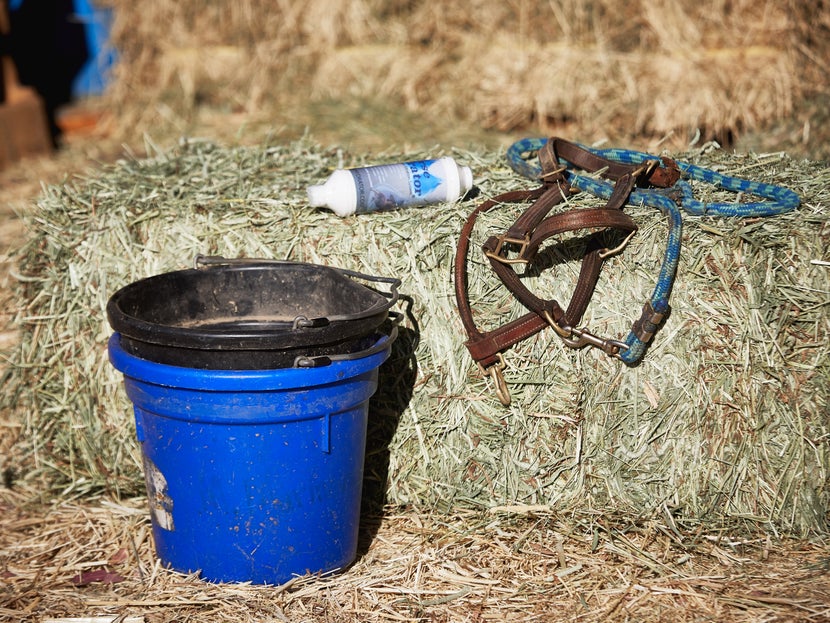
It takes a lot of preparation work to get ready for a rodeo, show, or camping trip. When it comes to feeding, having a trailer feeder and hay bag/net can keep your horse busy to help ease any travel-related anxiety. Always make sure you have good hardware on hand to secure your travel feeders, so your horse can safely eat without entanglement.
Buckets for water are essential, so you can also monitor how much water your horse is or is not drinking. Water is critical for horses; they need it for their overall well-being and to maintain healthy digestion. If your equine is prone to decreasing its water intake while traveling, it is a good idea to have salt and electrolytes on hand to encourage them to drink and rehydrate.
We invite you to check out the rest of our trailering and travel supplies, which are designed to support your equestrian endeavors, or check out RW Sponsored Rider Renae Cowley's Horse Trailer Travel Essentials.
Closing Thoughts
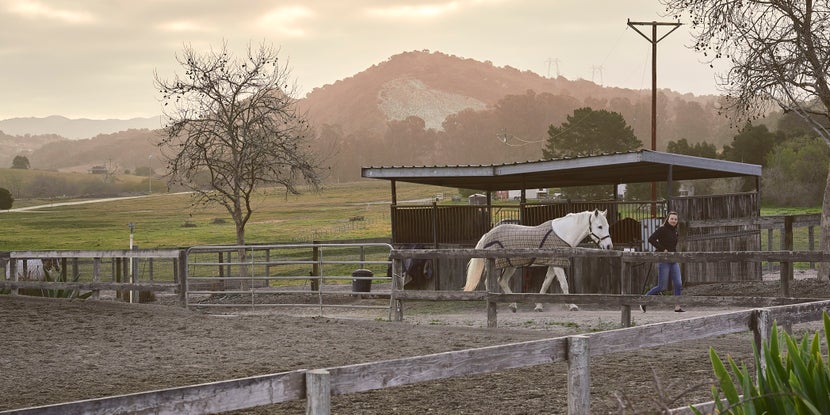
We hope this guide has helped you decide which feeder type would be the best for you and your horse. There is not necessarily a cookie-cutter one-feeder-fits-all option, and your feeding routine might go through some trial and error. Please feel free to reach out to our customer service team if you have any questions or concerns by calling 1(800)620-9145 or emailing info@ridingwarehouse.com for assistance. Take a look at all of our horse feeding supplies below, so you can tackle feeding with everything you need. Happy feeding!
